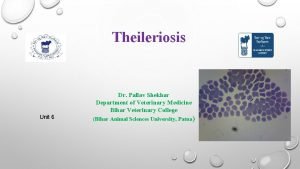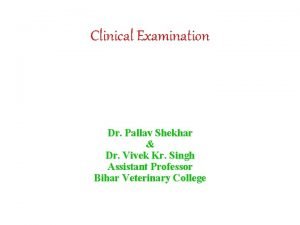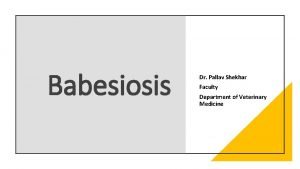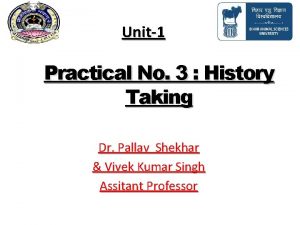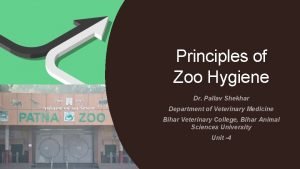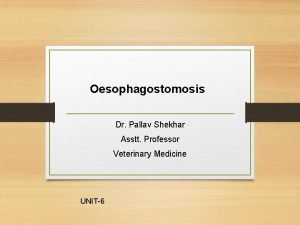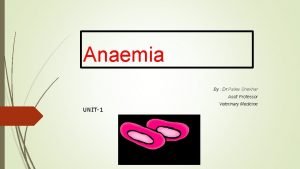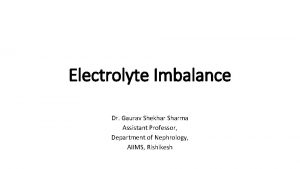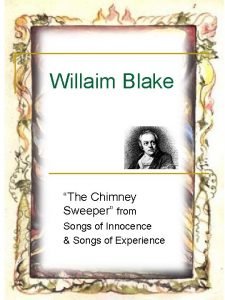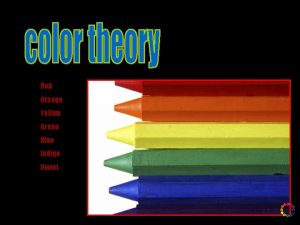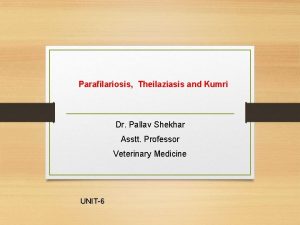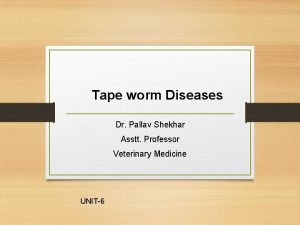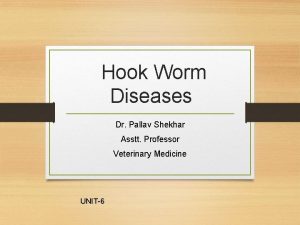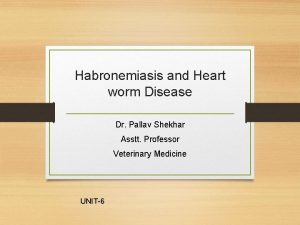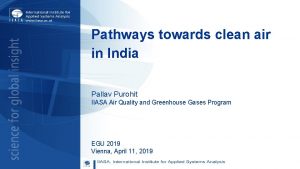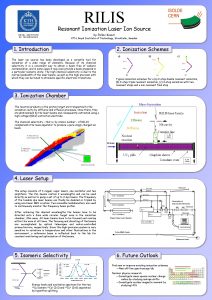Parafilariosis Theilaziosis and Kumri Dr Pallav Shekhar Asstt
















- Slides: 16

Parafilariosis, Theilaziosis and Kumri Dr. Pallav Shekhar Asstt. Professor Veterinary Medicine UNIT-6

Parafilariasis • Bleeding point • Summer Bleeding • Haemorrhagic dermatitis

Etiology and Host • Parafilaria bovicola in Cattle and Buffalo • P. papillomatosis in Horses

L/C • Indirect L/C and fly act as I/H

Clinical signs

Clinical signs • It produces nodules on the skin and there is rupturing of the skin and bleeding from the site. • The only external signs of infection in cattle are focal cutaneous hemorrhages (“bleeding spots”) that may ooze for some hours before clotting and drying in the matted hair of the coat. • Bleeding spots are induced by the female worm, which causes the formation of a small nodule, perforates the skin, and oviposits in the blood dripping from the central wound.

Diagnosis • Clinical Signs • Differential diagnosis of thorns, wire, ticks, or biting insects. • For differentiation, either fresh or dried blood should be mixed with water in a test tube and centrifuged. • The characteristic eggs are found on microscopic examination of the sediment.


Treatment • Ivermectin 0. 2 mg/kg S/C • Levamisole -7. 5 mg/kg for 5 days • Nitroxynl – 20 mg /kg repeated after 3 days

Theilaziasis ( Eye Worm) Etiology Theilazia rhodesii T. skrjabini T. gulosa T. leesei

• Worms are usually 2 cm long. • L/C indirect and musca or face fly act as I/H. • It is clinically characterized by excessive lacrimation, conjunctivitis, keratitis, corneal ulceration and abscess formation. • More common in cattle than horses

Treatment • Ivermectin. • Manual removal of the worms under the control of local anesthetic. • Levamizole @ 5 mg /kg b. wt orally or 1: 2000 aq. Soln of iodine or 3% soln. of Piperazine may be administered in nasolacrimally.

Kumri or Lumbar Paralysis Cerebrospinal nematodiasis Etiology Setaria spp. ( S cervi, S. equina, S. digitata, S. labiato-papillosa) Parasite is 5 -10 cm long thread like

L/C indirect I/H- Mosquito Found in peritoneal cavity of most domestic animals

Pathogenesis Adult female Motile embryo or microfilaria Circulate in peripheral blood of infected animals Mosquito found on another host (unnatural) Infective larvae develops Ingested by blood sucking mosquito Man, goat, sheep, horses Paralysis of hind legs

Treatment Not effective Ivermectin may be tried
 Dr pallav shekhar
Dr pallav shekhar Dr pallav shekhar
Dr pallav shekhar Dr pallav shekhar
Dr pallav shekhar Dr pallav shekhar
Dr pallav shekhar Dr pallav shekhar
Dr pallav shekhar Oesophagostomosis
Oesophagostomosis Dr pallav shekhar
Dr pallav shekhar Asstt theorem
Asstt theorem Toyo ito design philosophy
Toyo ito design philosophy Gaurav shekhar
Gaurav shekhar Blue
Blue Willaim blake
Willaim blake West side story romeo and juliet character comparison
West side story romeo and juliet character comparison Tall old people
Tall old people How to write 1 centavo
How to write 1 centavo Indigo and violet
Indigo and violet One night a theater sold 548
One night a theater sold 548
